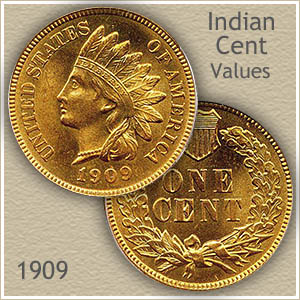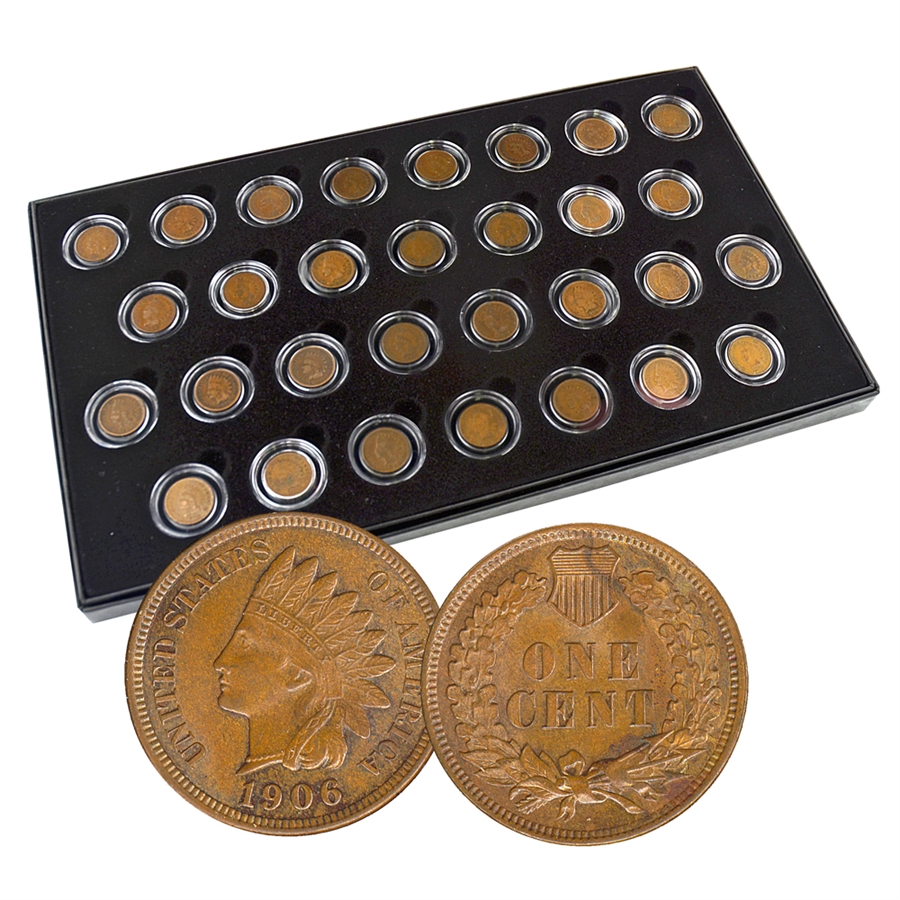
Bronze Indian Head cents remained in production without interruption for nearly half a century before giving way to the Lincoln design in 1909. The design remained the same for the entire run except for minute changes in 1886, when the then Chief Engraver, Charles Barber, slightly lowered the relief and made a small change in the position of. Medal turn 1909 Indian Head Thanks for all of your help - I will try to get a picture up. Coins in Canada are minted the same as in the US, so when I saw that the back of this penny was 90 degrees, or upside-down from the front, I did a double take.
Bronze Composite Penny

Minted at: San Francisco

Metal Composition: 95% Copper - 5% Tin and Zinc
Mass / Weight: 3.11 grams
 What This Coin Looks Like (Obverse, Reverse, Mint Mark Location, Special Features, etc.):
What This Coin Looks Like (Obverse, Reverse, Mint Mark Location, Special Features, etc.):The 1909 S Indian Head Cent (Penny) Mintmark is located under the wreath on the reverse of the coin as depicted in the example image above. This is also the rarest Indian Head Cent year/mint produced in terms of the total mintage figure.
| Good (G-4) | Very Good (VG-8) | Fine (F-12) | Very Fine (VF-20) | Extremely Fine (EF-40) | About Uncirculated (AU-50) | Uncirculated (MS-60) | Uncirculated (MS-63) | Proof (PR-63) |
|---|---|---|---|---|---|---|---|---|
| $578 | $626 | $716 | $776 | $895 | $978 | $1,079 | $1,254 | - |
USA Coin Book Estimated Value of 1909-S Indian Head Penny is Worth $626 in Average Condition and can be Worth $1,079 to $1,254 or more in Uncirculated (MS+) Mint Condition. Click here to Learn How to use Coin Price Charts. Also, click here to Learn About Grading Coins. The Melt Value shown below is how Valuable the Coin's Metal is Worth (bare minimum value of coin). Click here to see the Melt Value of every US Coin.
MELT VALUE: $0.0241
1909 Indian Head Penny Vdb
1909 Indian Head Penny Uncirculated
Even More Indian Head Cent Penny Years/Mints/Varieties

1 items found
- $560.00
Free Shipping
wo scarce coins came out in 1909: the 1909-S Indian head cent and the 1909-S 'VDB' Lincoln cent. Both are highly desirable among collectors of small cents.
The 1909-S Indian has a lower mintage than the 1909-S VDB cent, but for most grades sells for a lot less. This raises the question, why? Usually the coin with the lower mintage has higher market value, but not in this case.
The reasons come down to simple supply and demand.
In 1909, excitement over the new Lincoln cent created a frenzy of buying of the new coins. The short five-day period of 1909 VDB cents gobbled up all 26 million Philadelphia-minted cents. However, the much smaller San Francisco Mint issue was probably put into circulation despite its much lower mintage than its cousin issued later in the year (August 1909).
Thus the 1909-S Indian head cent was overlooked by hoarders and speculators as the new Lincoln cents were eagerly anticipated by the American public.
In the century since these two coins were released, the market value of the 1909-S Indian was often behind that of the 1909-S VDB cent — although in the 1920s, one could buy uncirculated 1909-S VDB cents for 25 cents each while 1909-S Indian cents in uncirculated condition sold for $1 and more.
By the time the first coin boards were printed in the 1930s, the empty space in most collections was the 1909-S VDB. Many fewer Indian head cent boards were made and sold, as there were far fewer collectors of that series at the time.
In fact, to date, the Lincoln cent is the most popular coin series with collectors as witnessed by the number of coin albums sold for the series by the major album makers, Dansco and Whitman.
* * *
I collected both series when I was in school in the 1930s and managed to find three of the 1909-S VDB cents and never found a 1909-S Indian head cent in change. But since I lived in Brooklyn, S-mint coins were uncommon in circulation.
I did know old-time collectors such as Bill Tracy, Charles Ruby and Ralph 'Curley' Mitchell who lived in California in the 1930s and 1940s and they found both coins in circulation in the early days.
My late friend Maurice M. Gould, who operated a coin business in Boston at that time, found none of the two coins in circulation but purchased many from collectors who either found them in change or bought them in 1909 when first released.
I visited the coin shop of the late Bob Johnson in San Francisco in 1963 when I was doing postgraduate work at nearby University of California, Berkeley, and he showed me a full roll of uncirculated 1909-S VDB cents he had recently purchased from a woman whose late husband bought them at a bank in 1909. He said he paid $1,000 for the roll. He also mentioned that he never bought a roll of 1909-S Indian head cents, although single coins showed up fairly often from customers who found them in change.
Over the decades, the aura of the 1909-S VDB cent has grown to the point where choice uncirculated coins are bringing over $10,000 at auction. Uncirculated 1909-S Indians still bring less, although actual population numbers are much lower.
In the July 2009 price list of California-based L&C Coins, one of the largest retailers of U.S. coins, the following were listed for sale:
Two 1909S Indian head cents, one graded PCGS VF-30 at $850 and one graded NGC VF-25 at $825. In the same price list were eleven 1909-S VDB cents ranging from a PCGS VF-20 for $1,500 to an NGC MS-65BN for $3,500. This illustrates that scarcity does not always equate to value. The mintage of the 1909-S Indian was 309,000, while the mintage of the 1909-S VDB Lincoln was 484,000.
There are numerous examples of rare coins bringing very different prices despite their small populations. A good example is the famed 1804 silver dollar; one recently sold for more than $2 million. There are 15 known specimens.
Going down the list of high-priced coins sold at auction, there are many coins that sold for less than half that amount even though only one or two specimens are known. This exemplifies the old economic axiom that supply and demand is the main pricing factor.
The 1909-S Indian has a lower mintage than the 1909-S VDB cent, but for most grades sells for a lot less. This raises the question, why? Usually the coin with the lower mintage has higher market value, but not in this case.
The reasons come down to simple supply and demand.
In 1909, excitement over the new Lincoln cent created a frenzy of buying of the new coins. The short five-day period of 1909 VDB cents gobbled up all 26 million Philadelphia-minted cents. However, the much smaller San Francisco Mint issue was probably put into circulation despite its much lower mintage than its cousin issued later in the year (August 1909).
Thus the 1909-S Indian head cent was overlooked by hoarders and speculators as the new Lincoln cents were eagerly anticipated by the American public.
In the century since these two coins were released, the market value of the 1909-S Indian was often behind that of the 1909-S VDB cent — although in the 1920s, one could buy uncirculated 1909-S VDB cents for 25 cents each while 1909-S Indian cents in uncirculated condition sold for $1 and more.
By the time the first coin boards were printed in the 1930s, the empty space in most collections was the 1909-S VDB. Many fewer Indian head cent boards were made and sold, as there were far fewer collectors of that series at the time.
In fact, to date, the Lincoln cent is the most popular coin series with collectors as witnessed by the number of coin albums sold for the series by the major album makers, Dansco and Whitman.
I collected both series when I was in school in the 1930s and managed to find three of the 1909-S VDB cents and never found a 1909-S Indian head cent in change. But since I lived in Brooklyn, S-mint coins were uncommon in circulation.
I did know old-time collectors such as Bill Tracy, Charles Ruby and Ralph 'Curley' Mitchell who lived in California in the 1930s and 1940s and they found both coins in circulation in the early days.
My late friend Maurice M. Gould, who operated a coin business in Boston at that time, found none of the two coins in circulation but purchased many from collectors who either found them in change or bought them in 1909 when first released.
I visited the coin shop of the late Bob Johnson in San Francisco in 1963 when I was doing postgraduate work at nearby University of California, Berkeley, and he showed me a full roll of uncirculated 1909-S VDB cents he had recently purchased from a woman whose late husband bought them at a bank in 1909. He said he paid $1,000 for the roll. He also mentioned that he never bought a roll of 1909-S Indian head cents, although single coins showed up fairly often from customers who found them in change.
Over the decades, the aura of the 1909-S VDB cent has grown to the point where choice uncirculated coins are bringing over $10,000 at auction. Uncirculated 1909-S Indians still bring less, although actual population numbers are much lower.
In the July 2009 price list of California-based L&C Coins, one of the largest retailers of U.S. coins, the following were listed for sale:
Two 1909S Indian head cents, one graded PCGS VF-30 at $850 and one graded NGC VF-25 at $825. In the same price list were eleven 1909-S VDB cents ranging from a PCGS VF-20 for $1,500 to an NGC MS-65BN for $3,500. This illustrates that scarcity does not always equate to value. The mintage of the 1909-S Indian was 309,000, while the mintage of the 1909-S VDB Lincoln was 484,000.
There are numerous examples of rare coins bringing very different prices despite their small populations. A good example is the famed 1804 silver dollar; one recently sold for more than $2 million. There are 15 known specimens.
Going down the list of high-priced coins sold at auction, there are many coins that sold for less than half that amount even though only one or two specimens are known. This exemplifies the old economic axiom that supply and demand is the main pricing factor.